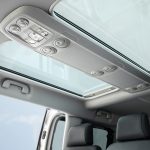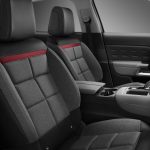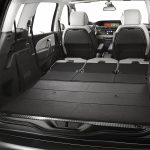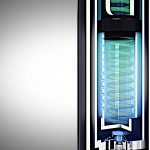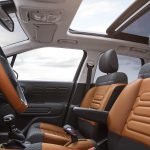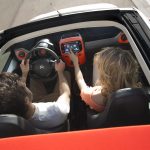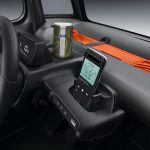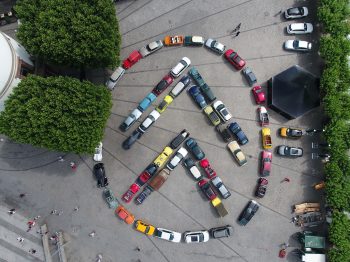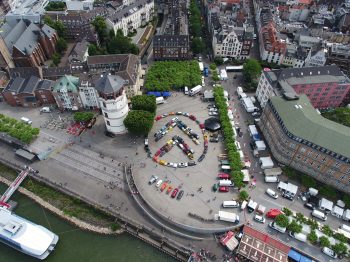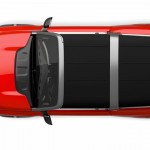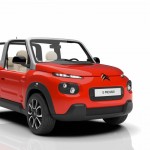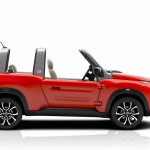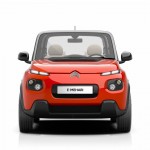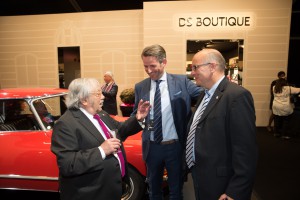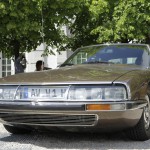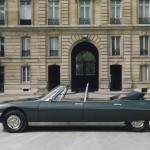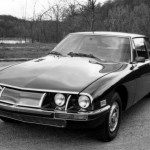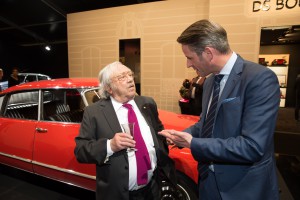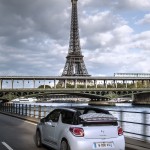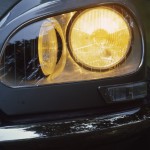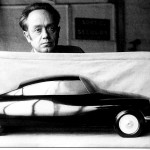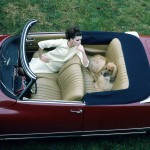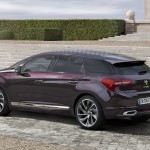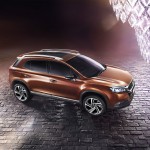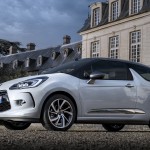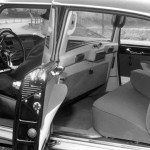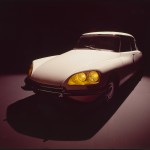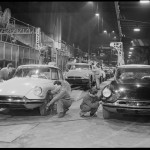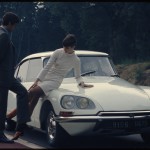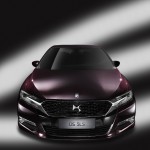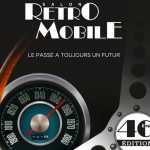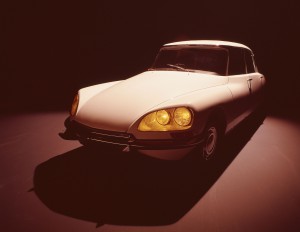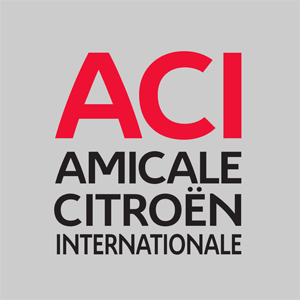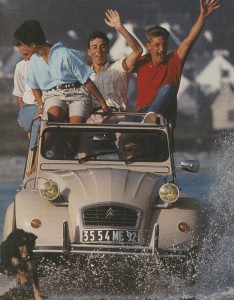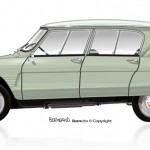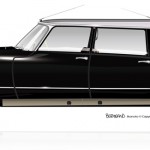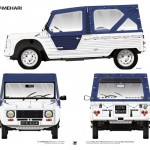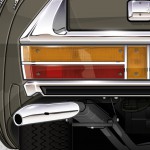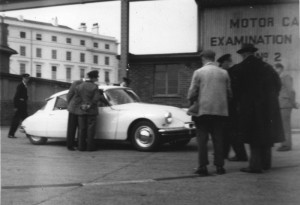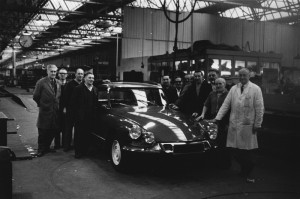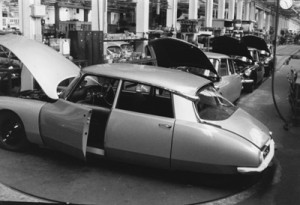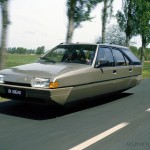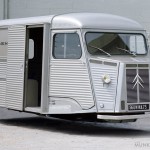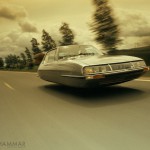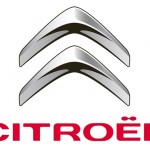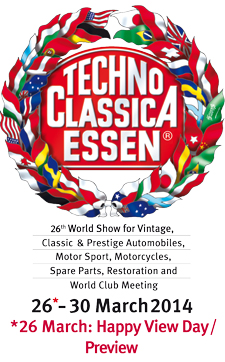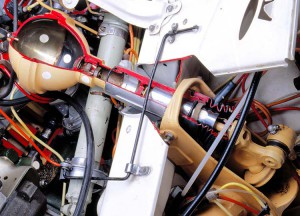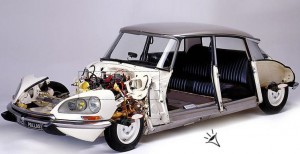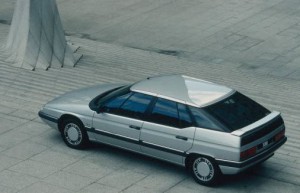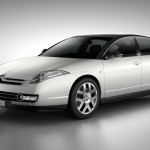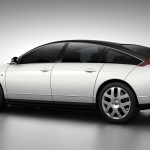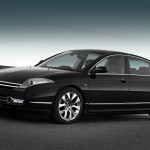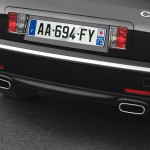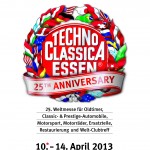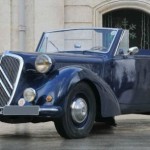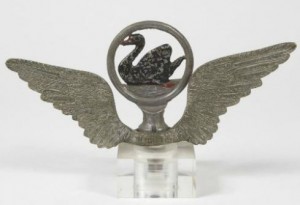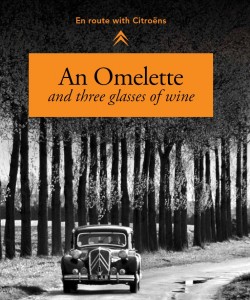
(English below, after the gallery)
Die Pressemitteilung de Citroën Deutschland GmbH:
Komfort steht bei Citroën seit über 100 Jahren im Mittelpunkt – Episode 3: Bedienkomfort
• Vom Traction Avant bis zum C5 Aircross SUV: Komfort steht bei Citroën stets im Mittelpunkt
• Programm Citroën Advanced Comfort® als das Markenzeichen aktueller Modelle
• Innovative und intuitive Technologien sorgen für Bedienkomfort „à la Citroën“
Einzigartiger Komfort auf Basis zahlreicher Innovationen ist seit der Unternehmensgründung im Juni 1919 eines der Markenzeichen von Citroën. Revolutionäre Federungstechnik, bequeme Sitze, ergonomische Bedienelemente, aerodynamische Linienführung und neuartige Materialien im Innenraum − die innovativen Lösungen prägen bis heute den typischen Citroën Komfort.
Mit dem aus vier Säulen bestehenden Citroën Advanced Comfort® Programm bündelt die Marke ihre Expertise auf dem Gebiet des Komforts:
• Fahrkomfort: Störfaktoren werden durch spezielle Innovationen in den Bereichen Federung, Dämmung und Sitze herausgefiltert, damit die Insassen sich wie in einem Kokon fühlen;
• Innenraumkomfort: Der Innenraum überzeugt mit einem großzügigen Raumangebot, praktischen Ablagen und pfiffiger Ausstattung;
• Bedienkomfort: Optimale Bedienung dank intuitiver Technologien, nützlicher Fahrhilfen und moderner Konnektivität;
• Komfort für Geist und Seele: Fokus auf die wirklich wichtigen Informationen. Der Innenraum strahlt ein beruhigendes Ambiente aus.
Diese vier Bereiche stützen sich auf historische Innovationen und verdeutlichen, dass Citroën seit über 100 Jahren für besonderen Komfort steht. Sie werden in insgesamt vier Episoden vorgestellt. In den ersten beiden Episoden standen der Fahr- und der Innenraumkomfort im Mittelpunkt, nun folgt der Bedienkomfort.
Bedienkomfort dank intuitiver Technologien
Citroën bringt technologische Innovationen stets mit Benutzerfreundlichkeit in Einklang mit dem Ziel eines hohen Bedienkomforts. Von den ersten mitlenkenden Scheinwerfern über die halbmondförmige Bedieneinheit bis zu den digitalen Bildschirmen – die Marke legt stets das Augenmerk auf praktische Eigenschaften und Benutzerfreundlichkeit.
Zu Beginn des 21. Jahrhunderts präsentiert Citroën eine einzigartige Lenkradinnovation. Während sich bei Fahrzeugen von Mitbewerbern die Bedientasten mit dem Lenkrad drehen, bleiben sie beim Citroën C4 und später auch beim Citroën C4 Picasso und Citroën C5 dank feststehender Lenkradnabe immer in der gleichen Position. Für den Fahrer sind sie so bei Lenkbewegungen besser zu sehen und einfacher zu bedienen.
Eine weitere wegweisende Technologie sind die mitlenkenden Scheinwerfer, die bereits 1967 in der DS eingeführt werden und die Sicherheit bei Nachtfahrten erhöhen: Die mitlenkenden Scheinwerfer folgen den Lenkbewegungen und leuchten somit die Strecke besser aus. Von den sechs einzelnen, hydraulisch arbeitenden Scheinwerfern des Citroën SM leuchten zwei automatisch in die jeweilige Kurve. Die Technologie, die heute als „intelligent“ bezeichnet wird, erhöhte schon vor langer Zeit den Bedienkomfort der Flaggschiffmodelle von Citroën.
Innovation im Cockpit
Ergonomische, leicht zugängliche Bedienelemente und innovative Kombiinstrumente sind der beste Beweis dafür, dass Citroën stets auf hohen Bedienkomfort achtet.
Der Bedienungssatellit feiert in den Citroën Modellen GSA und Visa Premiere. Die einzigartige Innovation umfasst sämtliche wichtigen Funktionen. Der Fahrer muss nicht mehr die Hände vom Lenkrad nehmen und kann sich auf das Fahren konzentrieren.
Im Citroën CX wird erstmals die Kunststoffformtechnik angewendet, um ein einheitliches Design von Kombiinstrument, Mittelkonsole und Türverkleidung zu erzielen. Von den 1960er bis zu den 1980er Jahren prägt der Designer Michel Harmand das Design der Marke. Er entwickelt für den Citroën CX eine einzigartige Bedieneinheit in Form einer fliegenden Untertasse, die sämtliche Bedienelemente rund um das Lenkrad umfasst. Die innovative, halbmondförmige Lösung, die in der gesamten Modellpalette von Citroën verbaut wird, setzt auf dem Gebiet des Bedienkomforts Maßstäbe. Weitere Automobilhersteller übernehmen das Konzept. Zur Ausstattung des Citroën CX gehört zudem der beleuchtete Lupentacho, der die Geschwindigkeit in einem vergrößernden Fenster anzeigt. Die Geschwindigkeit ist dadurch leichter und schneller abzulesen, als mit der herkömmlichen Tachonadel.
Der Citroën BX aus dem Jahr 1982 stellt im Innen- wie im Außendesign einen neuen Meilenstein dar. Nahezu 20 Prozent der Karosserie bestehen aus Kunststoff. 1985 wird der Citroën BX Digit zum Vorreiter: Als erstes Modell weltweit führt er ein vollständig digitales Kombiinstrument ein.
Integration neuer Technologien
Als Nachfolger der Citroën Modelle mit halbmondförmiger Bedieneinheit kommt der Citroën C6 mit Head-Up-Display auf den Markt. Die wichtigsten Fahrinformationen werden direkt in das Sichtfeld des Fahrers projiziert, damit dieser nicht mehr den Blick von der Straße wenden muss. Die Funktion zählt auch zur Ausstattung zahlreicher aktueller Modelle der Marke, darunter der Citroën SpaceTourer und der Compact SUV Citroën C3 Aircross. Beim Citroën Xsara Picasso wird das digitale Kombiinstrument erstmals in einem Großserienfahrzeug der Marke verbaut. Weitere Modelle werden mit Weiterentwicklungen dieser innovativen Technologie ausgestattet.
Die intuitive Mensch-Maschine-Schnittstelle ist Bestandteil der aktuellen Modelle der Marke. Sie bietet dem Fahrer und den weiteren Passagieren Zugang zur digitalen Welt. Dank der Anwendung Mirror Screen können die Funktionen des Smartphones auf dem vernetzten Touchscreen genutzt werden. Mirror Screen ist mit Android Auto, Apple CarPlay™ und MirrorLink® kompatibel.
Filme und Fotos finden Sie unter:
http://www.citroencommunication-echange.com/
Benutzername (in Großbuchstaben): COMFORTFORALL
Passwort (in Großbuchstaben): COCOON#20
Kontakt:
Christopher Rux
Leiter Presse und Öffentlichkeitsarbeit
Citroën Deutschland GmbH
- Post-production : Astuce Productions
- Copyright AGNIESZKA DOROSZEWICZ @ Continental Productions
- Copyright AGNIESZKA DOROSZEWICZ @ Continental Productions
- Post-production : Astuce Productions
- Copyright William Crozes @ Continental Productions
- Post-production : Astuce Productions
- Post-production : Astuce Productions
- Post-production : Astuce Productions
- Copyright William CROZES @ Continental Productions
- Post-production : Astuce Productions
- Post-production : Astuce Productions
- Post-production : Astuce Productions
- William CROZES @ PLANIMONTEUR
- William CROZES @ PLANIMONTEUR
- Post-production : Astuce Productions
- Post-production : Astuce Productions
- Copyright Wiiliam CROZES @ Continental Productions
- Copyright Wiiliam CROZES @ Continental Productions
- Post-production : Astuce Productions
- Post-production : Astuce Productions
- Copyright AGNIESZKA_DOROSZEWICZ @ Continental Production
- Post-production : Astuce Productions
- Post-production : Astuce Productions
- Copyright William Crozes @ Continental Productions
- Copyright William Crozes @ Continental Productions
- Copyright William Crozes @ Continental Productions
- Copyright William Crozes @ Continental Productions
- Copyright William Crozes @ Continental Productions
- Copyright William CROZES @ Continental Productions
- Copyright William CROZES @ Continental Productions
- Copyright William Crozes @ Continental Productions
- Copyright maison-vignaux @ Continental Productions
- Post-production : Astuce Productions
THE HISTORY OF CITROËN’S COMFORT
EPISODE 3: COMFORT OF USE
The notion of comfort has always been at the heart of Citroën’s models for over 100 years.
In this period of confinement where everyone is rediscovering their interior, Citroën is returning to the Citroën Advanced Comfort® programme. A programme designed to guide the conception of Citroën vehicles towards a unique type of comfort, a true signature of the Brand.
A keystone in the development of current models, the Citroën Advanced Comfort® programme is a comprehensive, modern and multi-sensorial approach to comfort, which thinks of the passenger compartment as the interior of a house. Its aim is to make every journey in a Citroën as comfortable as in the living room.
It is based on 4 major pillars:
* comfort of driving to feel like in a cocoon
* comfort of living for a practical and functional interior
* comfort of use with intuitive technologies to simplify life
* comfort of mind to experience a warm and bright atmosphere, with everything in its place
4 major areas of differentiation for the Brand’s models, driven by exclusive innovations such as suspensions with Progressive Hydraulic Cushions® or Advanced Comfort seats. Technologies accessible to as many people as possible.
4 pillars that can be found through concrete examples in the history of the Brand and that we propose you to rediscover through 4 episodes.
Today, episode 3, comfort of use.
COMFORT OF USE: INTUITIVE TECHNOLOGIES TO SIMPLIFY LIFE
INNOVATIVE STEERING WHEELS
For Citroën, functional comfort applies to the combination of highly ergonomic, easy-to-use cabin designs with technology that is intuitive and easy to operate. In the wider automotive sector, technology continues to take on greater prominence in cars; in some cases, to the detriment of user-friendliness. By contrast, Citroën has sought to apply new technology in such a way as to make its cars easier to use, with functionality enhancing comfort.
Reducing driving stress and fatigue has long been a core Citroën aim. The company believes true comfort lies in lightening the mental ‘load’ of driving, a talent particular to Citroën. For decades, Citroën has put functional comfort at the heart of vehicle design, leading the way when the company revolutionised two of the critical functional elements – the steering wheel and the dashboard.
Citroën led the way with a new steering wheel innovation in the early years of the 21st century, launching the fixed central steering wheel hub in the C4, seen also in the C4 Picasso and C5. With the proliferation of in-car technologies leading to more cluttered dashboards, many manufacturers started to move controls onto the steering wheel. Citroën’s clever design revolved around a static central hub, with a focused and easy-to-access command panel in direct line-of sight. Where other manufacturers’ controls rotated with the wheel, Citroën’s controls were static, making them clearly visible and easier to use. The innovation also met the tough safety demands of impact and airbag legislation.
Citroën used its steering to pave the way for another innovation: the company’s famous ‘turning’ headlights first featured in the 1967 DS, which aided night-driving by tracking the steering inputs to better illuminate the road ahead. Later, two of the SM’s six hydraulically levelled headlamps did the same. These lights feature as ‘intelligent headlamps’ in our cars today, but were introduced long ago by Citroën to enhance the easy, functional comfort of its flagship cars.
INSTRUMENTATION AND INNOVATION
Advanced ergonomic controls and innovative fascia designs provide further evidence of Citroën’s commitment to functionality, incorporating technologies in a way that enhances driver comfort.
The GS, GSA, CX and BX each featured advanced ergonomic controls and a design that offered ‘keyboard’ operated buttons for vital functions, in easy reach of the steering wheel. Later GSA models and the Citroën Visa also introduced a unique ‘satellite’ control panel, placing all the major controls at the driver’s fingertips. For the driver, this meant there was no need to take a hand off the wheel.
The CX pioneered the use of moulded plastics to create a level of design integration between the dashboard, console and door trim. One noteworthy element was the ‘flying saucer’-shaped instrument binnacle – the ‘Lunule’ – that supplied a crescent of controls around the steering wheel. The Lunule was a truly innovative design, dreamed up by sculptor, designer and artist Michel Harmand, who influenced Citroën design from the 1960s to the 1980s. At the time, this represented a new height for the ‘comfort of function’. As the Lunule evolved for application in other Citroën models, it was a concept aped by other car makers, as dashboard design embraced new plastic moulding technologies in the 1980s and 1990s.
The CX also featured a unique ‘revolving drum’ illuminated speedometer, with a large, magnified display of the car’s speed which revolved into a display window. This was easier for the driver to view and allowed a faster glance at the speedometer than a traditional needle on a dial.
The BX, first introduced in 1982, represents a new stepping stone in design, inside and out. Nearly 20% of the BX’s bodywork was made from plastics, and the cabin featured a moulded plastic architecture with fingertip control levers and sliders. With the 1985 BX Digit, Citroën pioneered a digital dashboard and display. Indeed, the BX Digit offered the world’s first digitally-signalled controls and centre console displays, alongside its digital ‘TV screen’ instrumentation. Using functionality to enhance comfort, the BX Digit provided a true forerunner to today’s digital dashboards.
INTEGRATING NEW TECHNOLOGIES
In the intelligent layout of dashboard and cabin controls, Citroën’s commitment to functional comfort demonstrates true innovation. Citroën functional design innovations include the first truly original cabin designs to seamlessly integrate new technologies to aid the driver and improve comfort and convenience. Lessons learned by the company over the decades now inform the development and integration of technology in Citroën’s contemporary cabins.
After earlier Lunule models, the C6 delivered Citroën’s first ‘head-up display’ (HUD) with vital information projected onto the windscreen for ease of reading. HUDs have since featured in many more recent models, including the SpaceTourer and the latest C3 Aircross. Citroën first introduced a digital driver instrument cluster on the Xsara Picasso, refining the concept for a number of models ever since. Today’s C4 SpaceTourer has a 12-inch (30cm) digital instrument cluster, displaying information to the driver and passengers in a functional, comfortable way.
Simplicity is at the heart of the information clusters now found in the brand’s current model lines. Connected touchscreen controls echo the functionality of smartphones and connect drivers and passengers to the outside world, with straightforward phone integration offered through MirrorLink displays and Apple CarPlay® and Android Auto®.
From the earliest ‘bending’ directional headlamps, through to the Lunule instrument cluster and today’s digital displays, the integration of new technology into any new Citroën has always been a matter of practicality and functionality.
PHOTOS DISPONIBLES SUR :
http://www.citroencommunication-echange.com/
Identifiant (MAJ) : COMFORTFORALL
Mot de passe (MAJ) : COCOON#20

